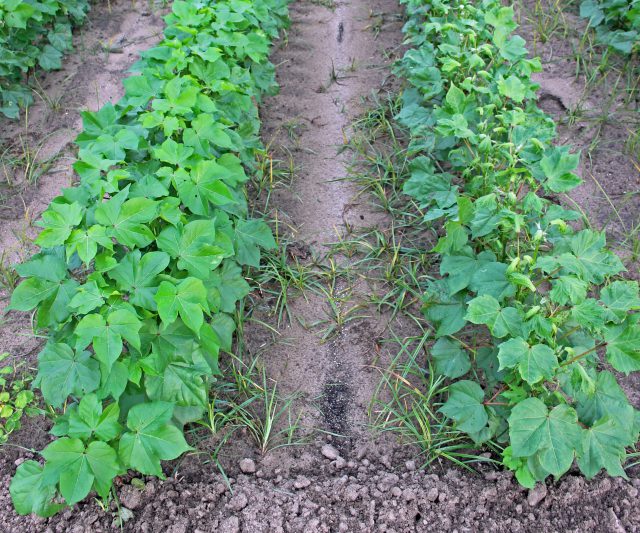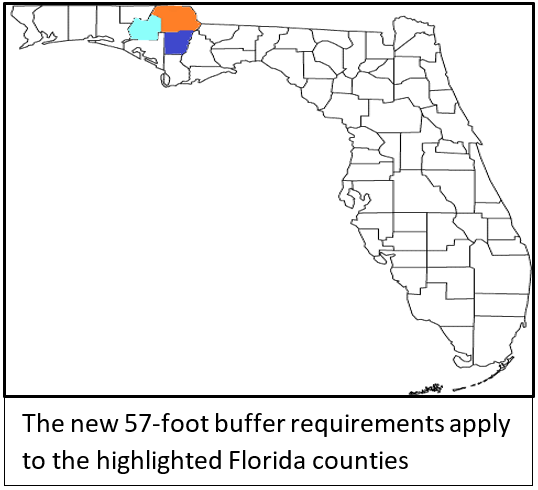Pratap Devkota, UF/IFAS Crop Weed Specialist
The United States Environmental Protection Agency (EPA) approved extension of the registration for dicamba products Engenia, Fexapan, and Xtendimax for use in dicamba-tolerant cotton and soybean until December 20, 2020. However, there are new rule changes incorporated in the current registration. It is very critical to understand the additional label changes for the 2019 crop season. The additional changes in the newer dicamba formulation products label for 2019 are as follow:
- “Two-year registration (until December 20, 2020)”
- “Only certified applicators may apply dicamba over the top (those working under the supervision of a certified applicator may no longer make applications)”
- “Prohibit over-the-top application of dicamba on soybeans 45 days after planting and cotton 60 days after planting”
- “For cotton, limit the number of over-the-top applications from 4 to 2 (soybeans remain at 2 OTT applications)”
- “Applications will be allowed only from 1 hour after sunrise to 2 hours before sunset”
- “In counties where endangered species may exist, the downwind buffer will remain at 110 feet, but there also must be a new 57-foot buffer around the other sides of the field (the 110-foot downwind buffer applies to all applications, not just in counties where endangered species may exist)”
- “Clarify training period for 2019 and beyond, ensuring consistency across all three products”
- “Enhanced tank clean-out instructions for the entire system”
- “Enhanced label to improve applicator awareness on the impact of low pH on the potential volatility of dicamba”
- “Label clean up and consistency to improve compliance and enforceability”
A particular change in the label that applies to some of the counties in Panhandle Florida is the new 57-foot omnidirectional buffer requirement. This measure is adopted to protect federally listed threatened and endangered species and critical habitat. This rule applies to Calhoun, Jackson, and Washington counties in Florida (see map below).
There is also a change in the buffer requirements under new label. For the 110-foot downwind buffer and 57-foot omnidirectional buffer, non-sensitive areas may be included. According to EPA, following areas are defined as “non-sensitive areas” and may be included in the buffer distance calculation when directly adjacent to the treated field edges:
- “Roads, paved or gravel surfaces, mowed and/or managed areas adjacent to field such as rights of way”
- “Planted agricultural fields containing: corn, cotton, and soybeans”
- “Areas covered by the footprint of a building, silo, or other man made structure with walls and or roof”
The practical implications of the new rule to the growers and applicators:
- It is required that certified applicators apply the Engenia, Fexapan and/or Xtendimax products and follow the measures contained in the Endangered Species Bulletins.
- The Endangered Species Bulletins can be accessed at https://www.epa.gov/endangered-species or by calling 1-844-447-3813 no more than six months before using the product. Applicators must use the Bulletin valid for the month in which they will apply the product.
- In Florida, three counties (Calhoun, Jackson, and Washington) where threatened and endangered species and critical habitat may exist, besides the 110-foot downwind buffer, 57-foot buffer around the other sides of the field (omnidirectional) is required.
- In counties where threatened and endangered species and critical habitat are not listed, the 110-foot downwind buffer still applies.
- Non-sensitive areas described above may be considered in the buffer distance calculation when directly adjacent to the treated field edges.


